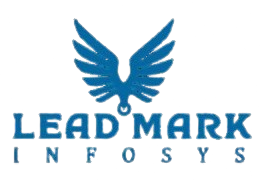Multisite WordPress Setup: The Complete Guide
Have you ever wanted to manage multiple websites from a single WordPress dashboard? That’s exactly what Multisite WordPress Setup enables. Whether you’re building a network of blogs, managing websites for a university, or creating franchise-based portals, WordPress Multisite is a powerful solution.
In this comprehensive tutorial, you'll learn everything you need to know—from setting up WordPress Multisite on localhost or cPanel to handling domain mapping, configuration, and security. If you're looking for a WordPress multisite setup tutorial tailored for beginners and pros alike, you're in the right place.
What is WordPress Multisite?
WordPress Multisite is a core feature of WordPress that allows you to run multiple websites from a single WordPress installation. It lets you create a multisite network where each sub-site can have its own domain, users, themes, and plugins—while still being managed from one admin panel.
Ideal for:
- Blog networks (e.g., travel blogs with different authors)
- Educational institutions
- Franchise or business branches
- SaaS platforms
How Does WordPress Multisite Work?
When you enable WordPress Multisite, it creates a master site and several sub-sites. All sub-sites share the same codebase, but have separate databases (or separate tables within a database).
Key technical aspects:
- Plugins and Themes: Shared across all sites, but you can enable them per site.
- Users: Super Admin oversees the network; individual Admins manage each site.
- Data Tables: Each site has its own post, options, and users table.
Benefits and Drawbacks of WordPress Multisite
✅ Pros:
- Centralized updates and backups
- Scalable for managing 10 or 10,000 sites
- Saves hosting resources
- One login to rule them all
❌ Cons:
- Plugin/theme compatibility issues
- Harder to separate sites later
- More complex backups and restores
- Not ideal for unrelated client sites
Real-life Example: Harvard uses WordPress Multisite for managing hundreds of departmental sites under one roof.
When to Use WordPress Multisite
Use it when:
- You want multiple sites with the same plugin/theme setup
- You manage a university or agency
- You run a multilingual site using different subsites
Avoid it when:
- Each site requires drastically different plugins
- You need completely separate hosting or admin teams
Requirements Before You Begin
Before you setup WordPress multisite, ensure:
- Your hosting supports it (VPS or managed hosting preferred)
- PHP 7.4+ and MySQL 5.7+ are available
- You’ve decided on a domain structure
- You have wildcard subdomains enabled (if using subdomains)
Choose Your Domain Structure
There are 3 main types of domain setups:
- Subdomains: site1.example.com
- Subdirectories: example.com/site1
- Mapped domains: www.siteone.com
Subdomains require wildcard DNS. Subdirectories are simpler to manage.
Setting Up WordPress for Multisite
Let’s begin your Multisite WordPress setup.
Step 1: Enable Multisite in wp-config.php
Open your wp-config.php file and add:
php
CopyEdit
define('WP_ALLOW_MULTISITE', true);
Save and refresh your dashboard.
Step 2: Install the Multisite Network
After enabling, go to Tools > Network Setup. Choose subdomain or subdirectory structure. Click Install.
Step 3: Update wp-config.php and .htaccess
You’ll be provided with code snippets. Add them carefully.
- Add new lines to wp-config.php
- Replace existing lines in .htaccess
Step 4: Access Network Admin Dashboard
Log out and back in. Go to My Sites > Network Admin > Dashboard.
From here, you can manage plugins, themes, and users across the network.
Network Settings and Configuration
Customize network-wide settings:
- Allow or restrict user registrations
- Set maximum file upload sizes
- Choose default themes for new sites
- Set site creation limits
Adding New Sites to the Network
Go to Sites > Add New, fill in the site title, and admin email. Done!
Use tags or categories to organize your network if you have dozens of subsites.
Managing Themes and Plugins
Multisite lets you control plugin/theme access:
- Network Activate: Enables for all sites
- Enable per site: Only accessible if allowed
Avoid conflicts by testing on staging first.
Domain Mapping in Multisite
If you want sites like mybrand.com, you’ll need domain mapping.
Steps:
- Install a plugin like WP MU Domain Mapping
- Add domains in Network Admin
- Update DNS and verify
Setting Up Multisite on Localhost
Great for testing! Use:
- LocalWP (recommended for beginners)
- XAMPP or MAMP (advanced users)
Make sure to enable wildcard subdomains and tweak hosts file if needed.
Setting Up WordPress Multisite on Hosting Platforms
✅ cPanel Setup:
- Enable wildcard subdomains
- Install SSL on all mapped domains
✅ AWS Setup:
- Use EC2 + Route 53
- Use Apache/Nginx configuration
✅ Digital Ocean:
- Use 1-click WordPress droplet
- Configure domain mapping with Nginx
Troubleshooting Common Multisite Issues
Common Problems:
- Can’t log in to sub-sites
- Plugins not working network-wide
- Mixed content or SSL issues
- File upload errors
Fix: Use proper .htaccess and DNS settings, check server logs.
Must-Have Plugins for WordPress Multisite
- NS Cloner – Clone sites in one click
- WP Multisite Enhancements – Better admin UI
- Multisite Language Switcher – For multilingual networks
- User Role Editor – Customize roles per site
- Domain Mapping – For custom domains
WordPress Multisite Security Best Practices
Secure your network with:
- SSL across all domains
- Two-factor login (2FA)
- Regular backups using Updraft Plus
- Limit user roles to minimum required
If you manage similar or related websites and want centralized control, Multisite WordPress Setup is the way to go. It's perfect for agencies, educators, networks, and enterprise users looking for streamlined site management.
Need help with setup or customization? Contact us today to get your Multisite environment ready.
Keywords: conclusion WordPress multisite, WordPress multisite setup and management


